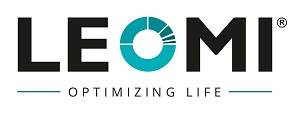Introduction:
In the quest for operational excellence in power generation, enhancing boiler efficiency while ensuring safety is paramount. One of the critical areas of focus is the optimization of primary air flow to coal mills, which plays a significant role in combustion efficiency and, consequently, overall boiler performance. This blog explores the strategic control of secondary air flow to coal mills using thermal mass flow meters, a technique that promises to optimize combustion, reduce emissions, and enhance safety.
The Importance of Accurate Air Flow Measurement:
The combustion process in coal-fired power plants involves the burning of pulverized coal in the presence of air. The air provided during this process is classified into primary and secondary air, where primary air is mixed with coal to form a combustible mixture, and secondary air is injected to sustain combustion. The strategic control of secondary air flow to coal mills using thermal mass flow meters offers a proven solution for enhancing boiler efficiency and safety. By providing accurate, real-time air flow data, The precise measurement and control of this secondary air are crucial because:
- Optimal air-to-fuel ratio: Ensuring the correct proportion of air to fuel is essential for complete combustion. An imbalance can lead to unburned carbon, resulting in lower efficiency and higher emissions.
- Temperature regulation: Excessive secondary air can lower the flame temperature, affecting the efficiency and formation of pollutants.
- Safety: Proper airflow prevents potentially hazardous conditions like coal mill explosions, which can occur due to high concentrations of volatile gases in the mill.
Working Principles of Thermal Mass Flow Meters:
Thermal mass flow meters (TMFMs) provide a direct method for measuring the mass flow of air/gases, independent of temperature and pressure changes, making them ideal for boiler applications. Their principle of operation involves measuring the amount of heat dissipated due to air flow from a heated sensor is proportional to the mass flow rate.
Benefits of TMFMs:
-
High Accuracy and Rangeability: TMFMs offer excellent accuracy and high turn down ratio (100:1), crucial for maintaining the air-to-fuel ratio within tight tolerances.
- Direct Mass Flow Measurement: Unlike volumetric meters (DP Type), TMFMs measure the mass flow directly, which is necessary for process control.
- Low Maintenance: These meters have no moving parts and require less maintenance, reducing downtime and operational costs.
- Rapid Response Time: TMFMs provide quick readings, enabling real-time adjustments to the combustion process, and enhancing both efficiency and safety.
Implementing TMFMs in Coal Mills:
The implementation of TMFMs in controlling secondary air flow involves several strategic steps:
- Installation Location: Meters are typically installed at strategic points where secondary air is injected into the boiler. This placement ensures the best representation of air flow that affects combustion.
- Integration with Control Systems: TMFMs are integrated with the plant’s control system. This integration allows for automated adjustments to the air flow based on real-time data, optimizing the combustion process continuously.
- Data Analysis and Adjustments: Continuous monitoring and analysis of data collected from TMFMs enable operators to make informed decisions about adjustments needed for improving efficiency and reducing emissions.
Case Studies and Results:
Several coal-fired power plants have reported improvements in boiler efficiency and reductions in emission levels after implementing thermal mass flow meters for controlling secondary air. These plants have observed:
- A reduction in unburned carbon in fly ash by up to 50%.
- Improved boiler efficiency by up to 2%, which translates to significant fuel savings over time.
- Enhanced safety with a marked reduction in the incidence of mill explosions.
Conclusion:
TMFMs enable power plants to optimize combustion, reduce emissions, and operate safely. As the energy industry continues to focus on operational efficiency and environmental compliance, the role of advanced technologies like TMFMs becomes increasingly critical in achieving these objectives.



